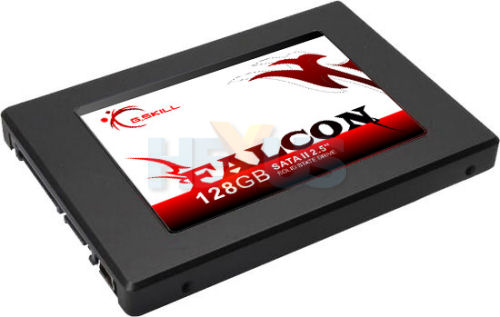SSD manufacturers have since internally RAIDed drives for faster performance, attempting to beat out the Intel SSD drive - X25-M - that began seeping into the market in late 2008.
Now, G.Skill and OCZ have released newer, faster drives shipping with a controller from Indilinx.

G.Skill's Falcon 2.5in SATA SSD will ship in 64GB, 128GB, and 256GB capacities, and the company quotes 230MB/s read and 190MB/s write on the two larger-capacity MLC-based drives, whilst the 64GB runs at 230MB/s read and 130MB/s write - all quite speedy. All drives have a 64MB buffer, however.
No pricing has been put forward by G.Skill, but the OCZ Vertex - a drive using a similar controller with comparable speeds - currently etails for £320 for the 120GB model.













